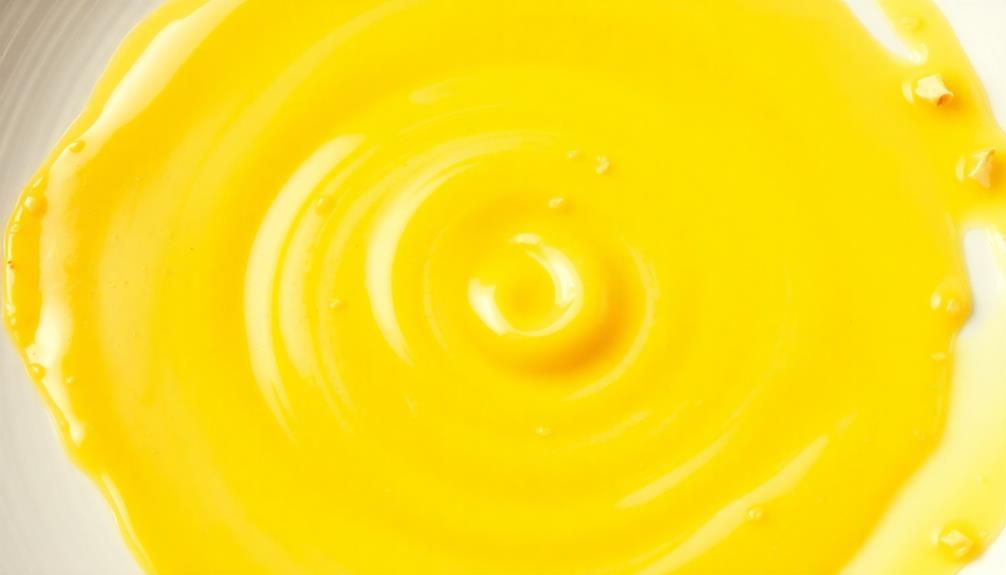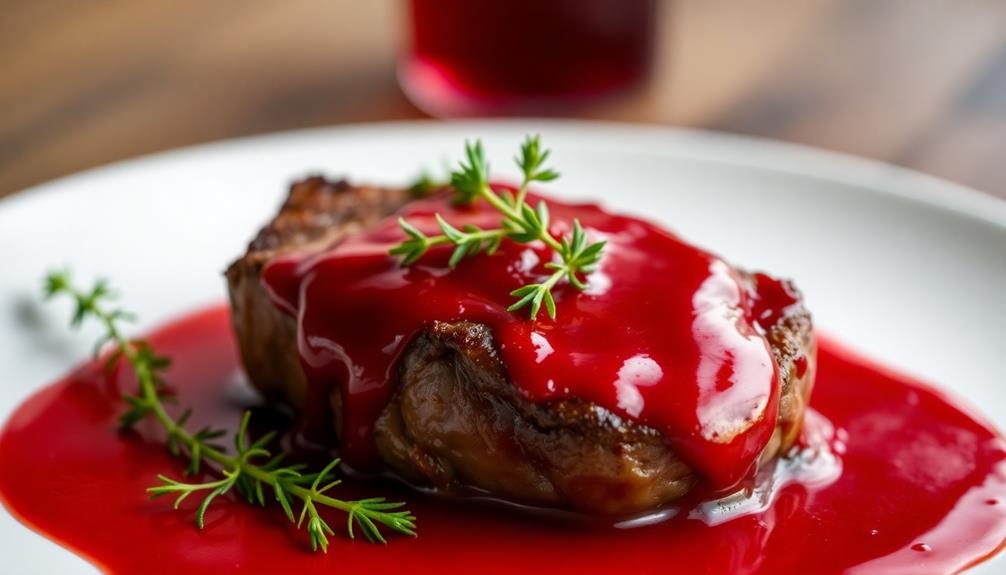Beurre noisette, the rich and nutty French butter sauce, can transform even the simplest of dishes into gourmet masterpieces. This magical elixir, crafted by gently browning butter until it develops a captivating aroma and deep golden hue, adds irresistible nutty notes that elevate both savory and sweet creations. Drizzle it over roasted veggies, grilled fish, or fluffy pancakes for an instant flavor boost that'll have your family and friends raving. With a little patience and practice, you'll unlock the secret to creating this versatile sauce that'll change the way you cook. Prepare to be amazed by the transformative power of beurre noisette.
Key Takeaways
- Beurre noisette, or brown butter, is a versatile French sauce made by cooking butter until it develops a rich, nutty flavor through caramelization of milk solids.
- The sauce's origins can be traced to the French countryside, where it became a staple in French cuisine, used in various dishes and desserts.
- Beurre noisette can enhance both savory and sweet dishes, such as roasted vegetables, grilled fish, pancakes, and waffles, by adding depth and complexity.
- Proper technique is crucial for achieving the perfect golden-brown color and toasted-nut aroma, requiring patience and gentle heating to avoid burning.
- Beurre noisette can transform ordinary meals into gourmet experiences, impressing guests and elevating the perception of home-cooked dishes.
History

When did the origins of beurre noisette, or nutty brown butter, first emerge? This rich, golden-brown sauce has a fascinating history dating back centuries.
It's believed the technique of browning butter originated in the French countryside, where resourceful cooks would heat butter past the melting point to create a deeply flavorful sauce. The process of making butter itself has roots in ancient civilizations, with significant roles in culinary traditions documented throughout history.
As the butter cooks, the milk solids caramelize, releasing a nutty, toasted aroma that's simply irresistible. This process unlocks a whole new dimension of flavor, transforming ordinary butter into something extraordinary.
Over time, beurre noisette became a staple in French cuisine, finding its way into sauces, toppings, and even desserts.
Today, this versatile sauce is enjoyed around the world, adding a touch of richness and complexity to all sorts of dishes. Whether drizzled over roasted vegetables, spooned over grilled fish, or used in baking, beurre noisette is a true culinary gem with a captivating history that continues to inspire cooks everywhere.
Recipe
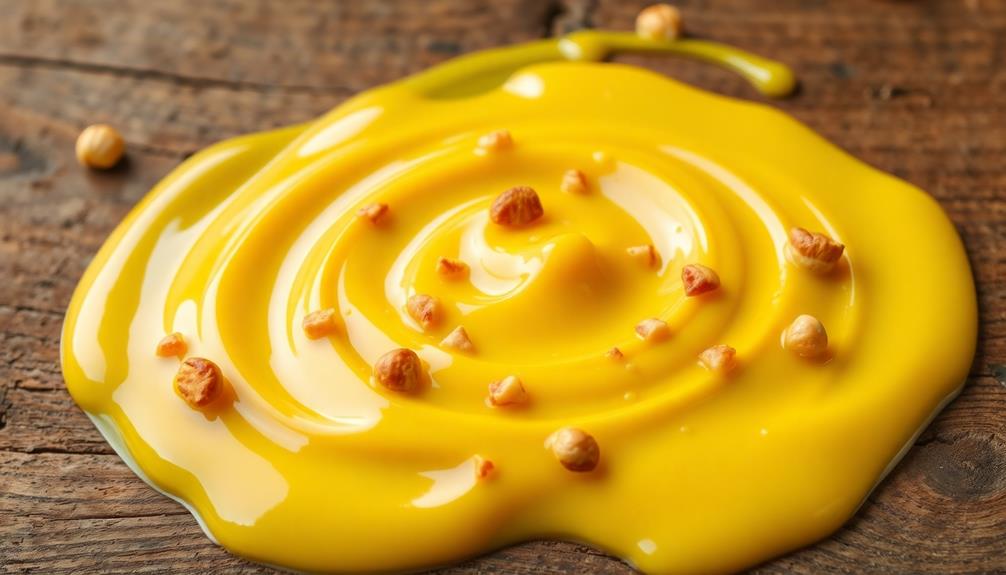
Beurre noisette, also known as brown butter, is a simple yet versatile sauce that adds a rich, nutty flavor to a variety of dishes. This sauce is made by gently cooking butter until it takes on a golden-brown hue and releases a toasted, nutty aroma.
Many coffee lovers appreciate the way different brewing methods can highlight unique flavors, much like how beurre noisette enhances various ingredients in a dish.
Beurre noisette can be used as a sauce for meats, vegetables, pasta, or even drizzled over desserts. The nutty, caramelized flavor pairs beautifully with both savory and sweet elements, making it a staple in the kitchens of professional and home cooks alike.
Ingredients:
- 4 ounces (1 stick) unsalted butter
- Pinch of salt (optional)
Instructions:
In a small saucepan, melt the butter over medium heat, stirring occasionally. Continue to cook the butter, swirling the pan occasionally, until it turns golden-brown and releases a nutty aroma, about 5-7 minutes. Be careful not to let the butter burn.
Tips:
- Use a light-colored butter for the best results, as it will allow you to see the color changes more clearly.
- Keep a close eye on the butter as it cooks, as it can go from perfectly browned to burnt quickly.
- Beurre noisette has a short shelf life, so it's best to use it immediately after making.
- Adjust the cooking time as needed, depending on the size of your saucepan and the amount of butter you're using.
Cooking Steps
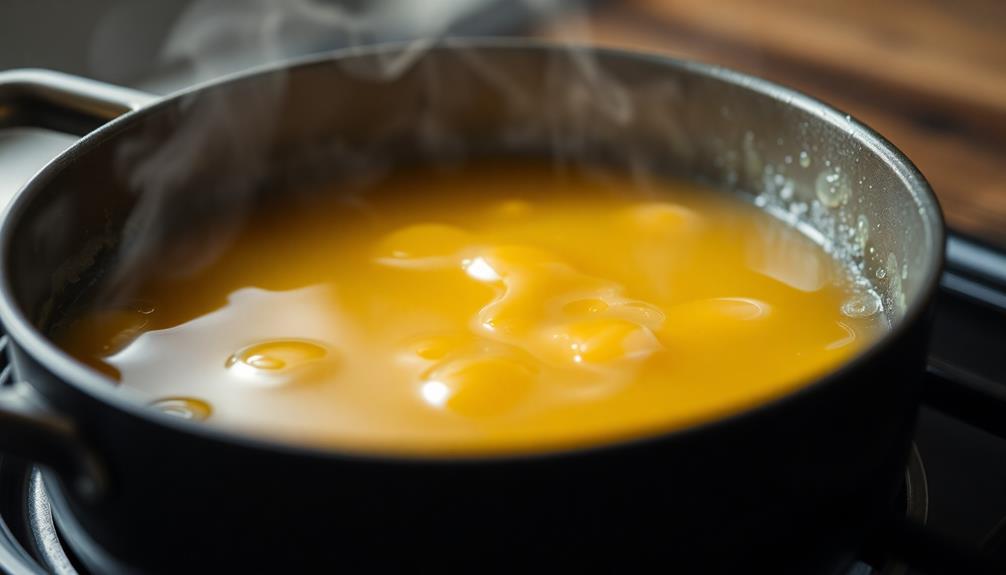
Melt the butter over medium heat, letting it cook until it's pleasantly fragrant.
This process is crucial as it not only develops the flavor but also enhances the nutty aroma that characterizes savory and flavorful infusions.
Stir it occasionally as it turns a lovely golden brown.
Give it a taste and adjust the seasoning as needed before removing it from the heat.
Step 1. Melt Butter Over Medium Heat
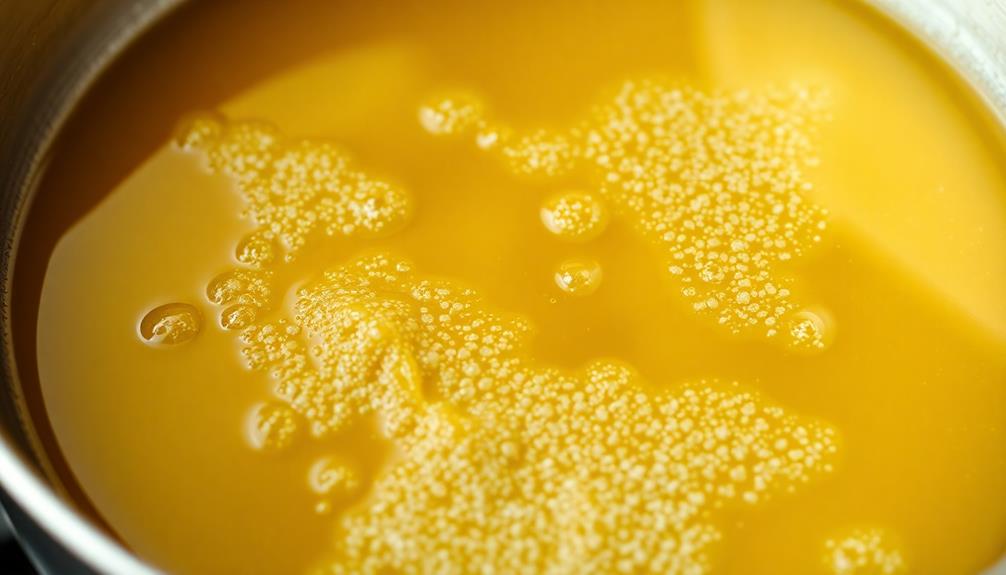
To make the beurre noisette, you'll want to start by melting the butter over medium heat. As the butter begins to melt, keep a close eye on it, stirring occasionally.
You'll notice the butter start to foam and bubble, which is a good sign. Continue cooking, letting the butter gently brown and develop a nutty aroma. This process can take around 5-7 minutes, so be patient and don't let the butter burn.
Once the butter has reached a rich, golden-brown color and a delightful nutty scent fills the air, it's time to remove it from the heat. The butter will continue to cook and brown even after you take it off the stove, so pay close attention to the color and smell.
Your goal is to achieve that perfect balance of browned butter goodness without letting it go too far and turn bitter. With a little practice, you'll be an expert at making this flavorful, versatile sauce in no time.
Step 2. Cook Until Fragrant
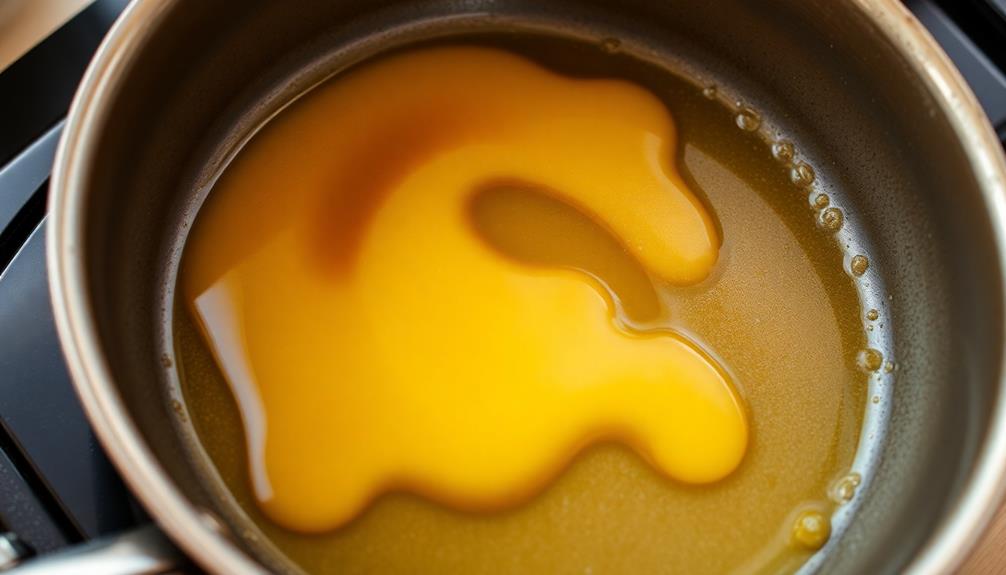
As the butter transforms, its aroma will begin to intensify. Keep a close eye on it, stirring frequently.
You'll notice the butter start to foam and sizzle, gradually turning a golden-amber hue. The fragrance will become progressively nuttier and more enticing.
Don't be tempted to rush this process – patience is key. Let the butter cook until it reaches that perfect nutty, toasted scent, which should take around 5-7 minutes.
When you catch that delightful aroma, you'll know it's ready. The color should be a rich, deep brown, not burned.
Remove the pan from the heat immediately to prevent the butter from scorching. This nutty, fragrant beurre noisette is the foundation for your incredible sauce, so take the time to get it just right.
Your efforts will be rewarded with a depth of flavor that transforms any dish.
Step 3. Stir Occasionally Until Golden Brown
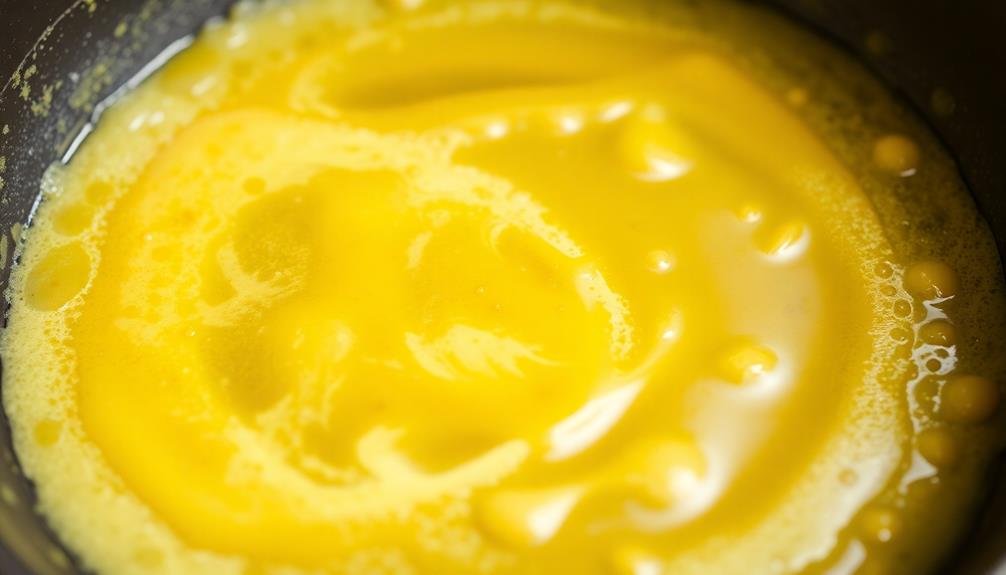
Begin by placing the butter in a light-colored pan over medium heat. As the butter melts, keep a close eye on it, stirring occasionally.
You'll notice the butter starts to foam and bubble – that's normal! Keep stirring gently to prevent burning.
Soon, the butter will begin to take on a nutty, toasted aroma. This is the good stuff – the beurre noisette, or "hazelnut butter."
Keep stirring until the butter turns a rich, golden-brown color. You'll see little specks of browned milk solids forming – that's exactly what you want.
Once the butter reaches this gorgeous, nutty hue, remove it from the heat immediately. Continuing to cook it past this point will cause the butter to burn and become bitter.
Carefully pour the beurre noisette into a heat-safe bowl to stop the cooking process. Get ready to drizzle this incredible, flavor-packed sauce over everything!
Step 4. Taste and Adjust Seasoning as Needed
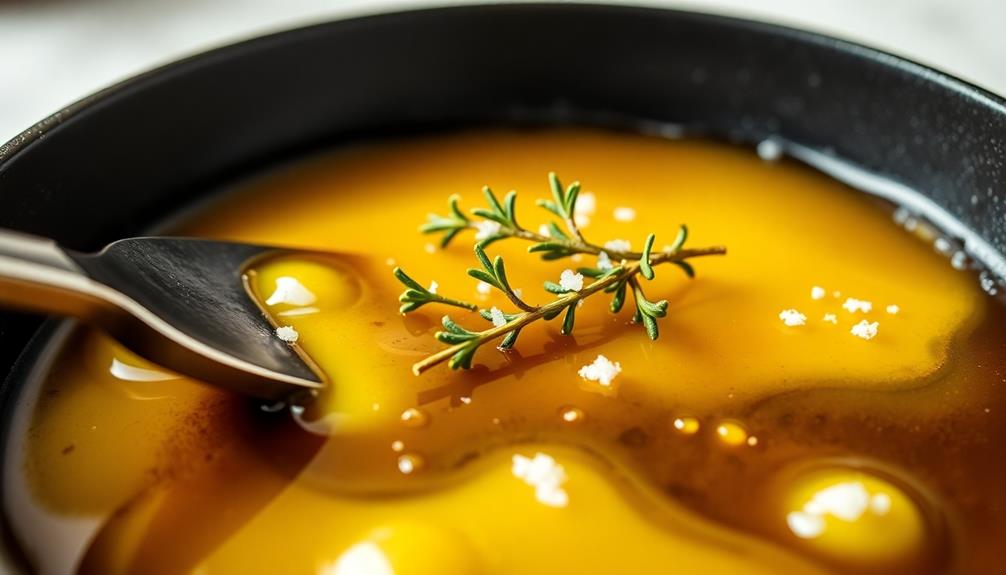
With your beautifully browned beurre noisette ready, it's time to taste and adjust the seasoning as needed. Dip a clean spoon into the rich, nutty sauce and give it a try. How does it taste? Savory? Salty? Or perhaps a bit flat? This is your chance to perfect the flavor.
If the sauce seems a tad too salty, add a small splash of lemon juice or white wine vinegar to balance it out.
Need more depth? A sprinkle of freshly ground black pepper or a pinch of cayenne can liven things up. Craving a bit more sweetness? Try stirring in a teaspoon of maple syrup or honey.
Taste, adjust, and repeat until the beurre noisette is exactly how you like it. The beauty of this sauce is its versatility – it's all about finding the perfect flavor profile to complement your dish.
Step 5. Remove From Heat
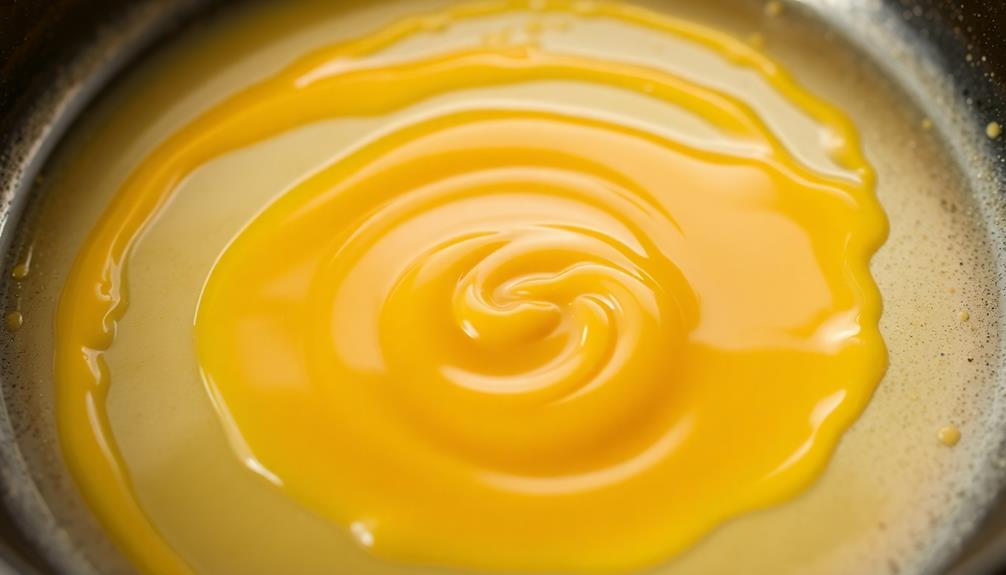
Once the beurre noisette has reached the desired color and nutty aroma, promptly remove the pan from the heat. This stops the butter from burning and ensures your sauce doesn't become bitter.
You'll know it's ready when the butter transforms into a rich, golden-brown hue and fills the air with a heavenly, toasted-nut scent.
Now, carefully pour the hot beurre noisette through a fine-mesh sieve to strain out any browned milk solids. This creates a silky-smooth sauce.
If you'd like, you can reserve the nutty milk solids to garnish the finished dish. Just don't let them sit in the hot butter for too long, or they'll burn.
Once strained, your beurre noisette is ready to drizzle over roasted vegetables, grilled meats, or even pancakes.
The possibilities are endless! This versatile sauce adds an incredible depth of flavor that will elevate any meal.
Enjoy the fruits of your labor – your kitchen is about to smell divine.
Final Thoughts
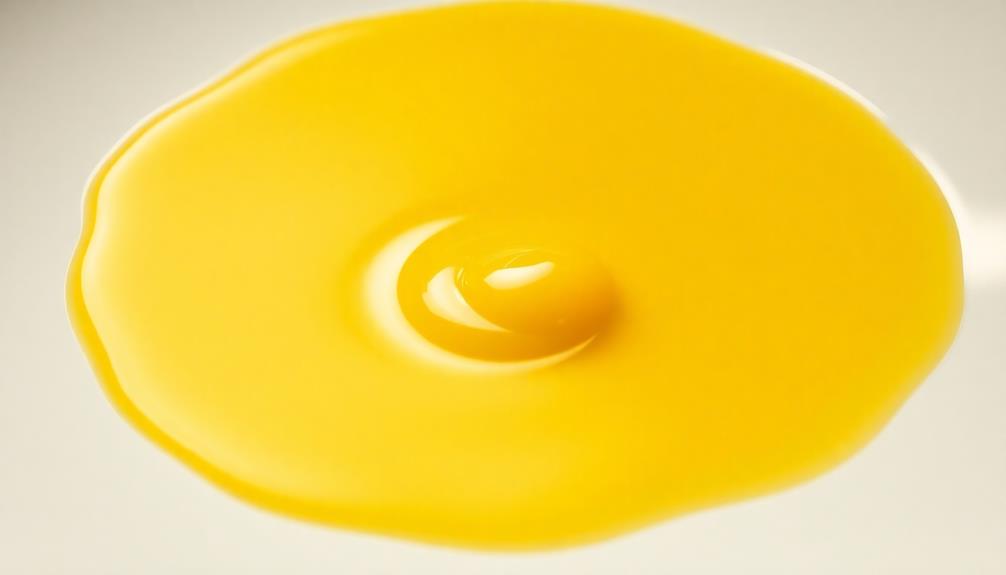
Though beurre noisette may not be the quickest sauce to prepare, the impressive complexity of flavors it provides far outweighs any extra time invested.
This rich, nutty butter sauce transforms even the simplest dishes, adding a depth of flavor that will have your family and friends raving.
The key is to patiently let the butter gently brown, allowing the milk solids to caramelize and develop those irresistible nutty notes.
Don't be tempted to rush the process – the patient cook is rewarded with a sauce that's truly out of this world.
Once you've mastered the technique, you'll find endless ways to utilize beurre noisette, from topping steaks and roasted vegetables to drizzling it over pancakes or waffles.
With a little practice, you'll be impressing everyone who tastes your creations.
Frequently Asked Questions
Can Beurre Noisette Be Made With Unsalted Butter?
Absolutely, you can make beurre noisette with unsalted butter. The nutty, caramelized flavor comes from the butter browning, not the salt content. Just be mindful of adjusting the seasoning as needed without the added saltiness.
How Long Can Beurre Noisette Be Stored?
Beurre noisette can be stored for up to a week in the refrigerator. Just be sure to keep it in an airtight container. The nutty, buttery flavor will remain fresh and delicious for several days.
Can Beurre Noisette Be Used in Baking?
Yes, you can use beurre noisette in baking. The rich, nutty flavor it provides can enhance various desserts and baked goods. It's a versatile ingredient that can add depth and complexity to your baking creations.
Is Beurre Noisette Gluten-Free?
Yes, beurre noisette is gluten-free. Since it's made by browning butter, it doesn't contain any wheat or gluten-containing ingredients. You can use this nutty, flavorful butter in all sorts of gluten-free cooking and baking applications.
Can Beurre Noisette Be Made in Advance?
Yes, you can definitely make beurre noisette in advance. It'll keep in the fridge for up to a week, so you can prepare it ahead of time and use it whenever you need that rich, nutty flavor.
